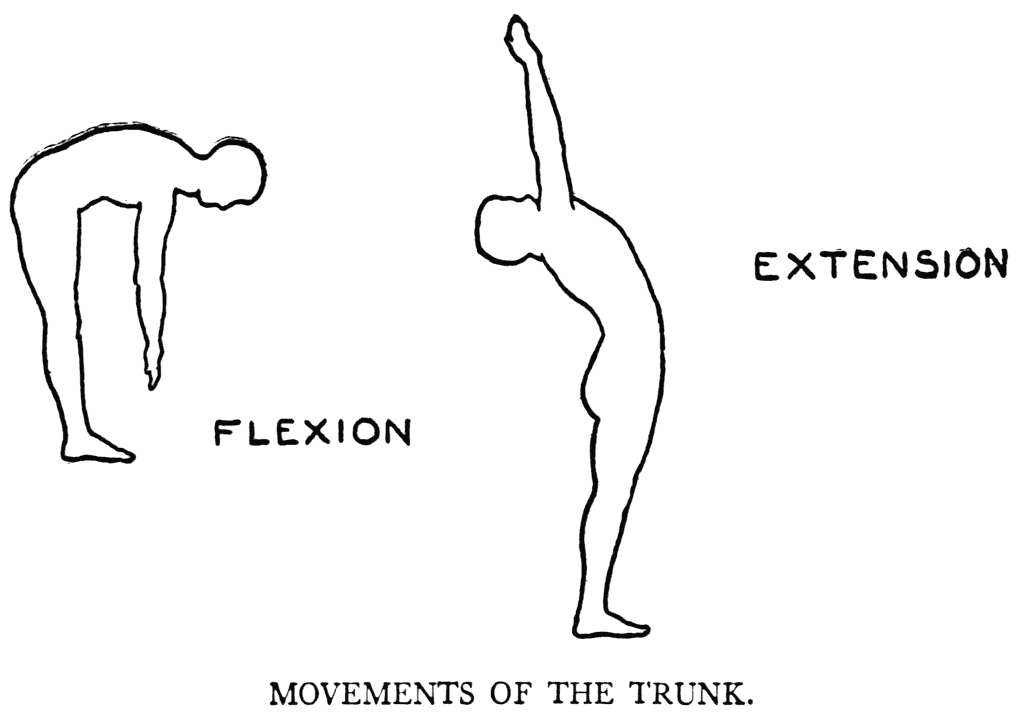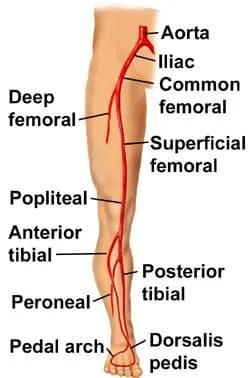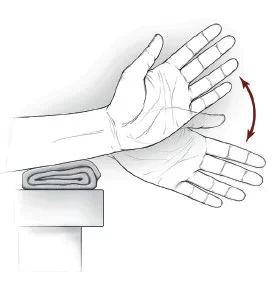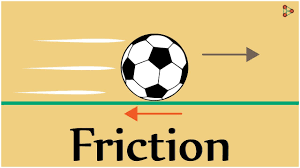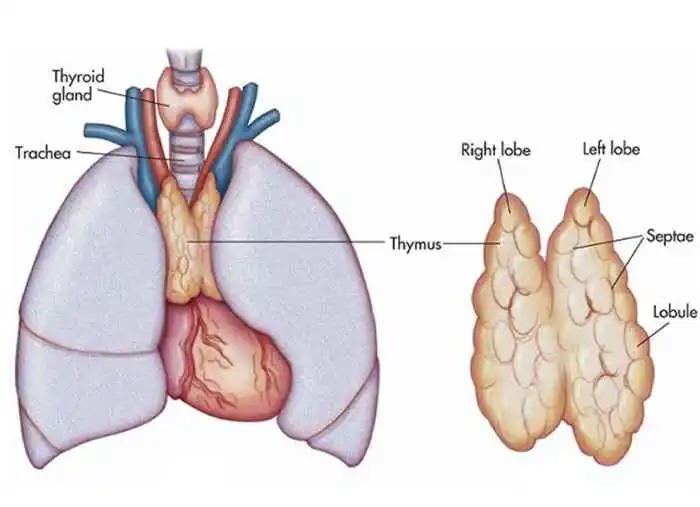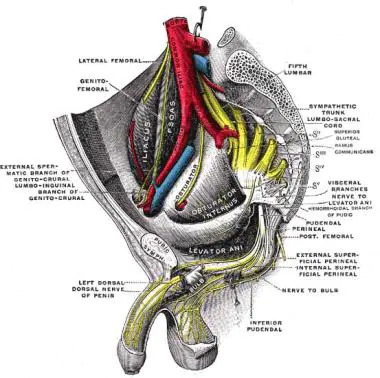Lumbar Flexion And Extension
Table of Contents
What is Lumbar Flexion And Extension?
Lumbar flexion and extension refer to the two main types of movement that occur in the lower part of the spine, specifically the lumbar region:
- Lumbar Flexion: This movement involves bending the lower back forward, decreasing the angle between the front of the pelvis and the ribcage. Imagine rounding your lower back, as you do when you bend forward to touch your toes. Lumbar flexion is commonly used during activities like picking up objects from the ground or sitting down.
- Lumbar Extension: This movement is the opposite of flexion. It involves arching the lower back backward, increasing the angle between the front of the pelvis and the ribcage. Think of the movement you make when you lean back slightly while standing. Lumbar extension helps with activities like standing up from a seated position or looking upward.
Both lumbar flexion and extension are essential for the overall functionality of the spine. Maintaining a balance between these movements, along with stability and proper alignment, contributes to a healthy and functional lower back. However, it’s important to perform these movements with proper form to avoid strain or injury to the spine. If you have concerns about your spinal health or experience discomfort, it’s advisable to consult a healthcare professional for guidance.
Lumbar Flexion
What is Lumbar Flexion?
Lumbar flexion refers to the forward bending movement of the lower spine, specifically the lumbar region. It occurs when you bend your lower back forward, bringing your chest closer to your thighs. Lumbar flexion is a common movement in various activities such as bending over to pick up an object from the ground or performing certain exercises. It is essential to maintain proper form and avoid excessive lumbar flexion to prevent potential strain or injury to the lower back.
Lumbar Flexors Muscles
The lumbar flexor muscles are the group of muscles responsible for flexing the lumbar spine, causing it to bend forward. These muscles work together to facilitate movements like bending forward or bringing the chest closer to the thighs. The main lumbar flexor muscles include:
- Psoas major: This muscle originates from the lumbar vertebrae and runs down to the thigh, playing a significant role in hip flexion and lumbar spine movement.
- Iliacus: It is a flat, triangular muscle located on the inside of the pelvis and works in conjunction with the psoas major to flex the hip joint and lumbar spine.
- Rectus abdominis: Known as the “abs,” this muscle runs along the front of the abdomen and helps to flex the lumbar spine, especially during activities like sit-ups or crunches.
- Tensor fasciae latae: Although primarily responsible for flexing and abducting the hip joint, this muscle also contributes to lumbar flexion to some extent.
- External obliques: These muscles run diagonally across the abdomen and help in bending the spine forward and twisting the torso.
Remember that proper training and maintaining flexibility in these muscles are essential to avoid strain and injury when performing activities that involve lumbar flexion. It’s always a good idea to consult with a healthcare professional or a fitness trainer to ensure you use the correct techniques and exercises to engage these muscles effectively and safely.
Range of Motion Of Lumbar Flexion
The range of motion (ROM) of lumbar flexion refers to the degree of forward bending that the lumbar spine can achieve. It is measured in degrees and differs from person to person. On average, the normal range of lumbar flexion is approximately 40 to 60 degrees. This means that when standing upright, a person can bend forward at the waist and bring their chest toward their thighs, typically achieving around 40 to 60 degrees of forward flexion.
However, it’s important to note that the range of motion can be influenced by various factors, including individual anatomical differences, age, fitness level, and any pre-existing conditions or injuries. Some individuals may have a more significant range of lumbar flexion, while others may have limitations due to factors like tightness in the muscles or spinal conditions.
Maintaining a healthy and flexible range of motion in the lumbar spine is crucial for daily activities and overall mobility. Engaging in regular stretching exercises and maintaining good posture can help preserve and improve lumbar flexion. However, it’s essential to perform these exercises with proper form and avoid overstretching or putting excessive strain on the lower back to prevent injury. If you have concerns about your range of motion or experience any discomfort, it’s advisable to consult a healthcare professional or a physical therapist for personalized guidance and assessment.
How to Check Range of Motion of Lumbar Flexion
To check your range of motion for lumbar flexion, you can perform a simple test called the lumbar flexion measurement. Here’s how to do it:
- Preparation:
- Find a flat and firm surface to stand on, like the floor or a yoga mat.
- Stand barefoot with your feet shoulder-width apart.
- Keep your knees straight but not locked.
2. Test Procedure:
- Place your hands on your hips, and identify the top of your hip bones (iliac crests) on both sides.
- Use these landmarks as reference points to ensure accurate measurement.
- Stand tall with your spine in a neutral position (maintain a slight arch in your lower back).
- Slowly start bending forward at your waist, bringing your chest toward your thighs.
- Keep your knees straight during the movement.
- Continue bending until you feel a gentle stretch or discomfort in your lower back or hamstrings.
3. Measurement:
- While bending forward, have a partner or use a measuring device to determine the angle of lumbar flexion.
- The measurement is taken from the starting upright position (neutral spine) to the point where your spine is maximally flexed.
- The angle achieved during the forward bend indicates your lumbar flexion range of motion.
4. Recording Results:
- Note down the angle achieved during the test.
- Repeat the test a couple of times to ensure consistency in your measurements.
Keep in mind that this test is a basic way to get an approximate measurement of your lumbar flexion range of motion. For more accurate and comprehensive assessments, consult with a healthcare professional or a physical therapist who can conduct a thorough evaluation and provide personalized recommendations based on your individual needs. Additionally, they can rule out any underlying conditions or factors that might be affecting your lumbar flexibility.
Test For Lumbar Flexion
To perform a simple test for lumbar flexion, you can use the Modified Schober Test. It’s a common and effective method to assess the range of motion in the lumbar spine. Here’s how to do it:
- Preparation:
- Find a flat and firm surface to stand on, like the floor or an examination table.
- Stand barefoot with your feet shoulder-width apart.
2. Test Procedure:
- Identify the landmark: With your fingers, find the dimples or the bony prominences of your lower back (posterior superior iliac spines – PSIS). These are the points on your hips located slightly above your buttocks.
- Mark the landmark: Use a non-permanent marker or a piece of tape to make small dots on both sides over the PSIS points.
- Establish the reference point: Measure and mark a horizontal line 10 centimeters (about 4 inches) above each PSIS point. You can use a ruler or tape measure to ensure accuracy.
- Perform the test: Stand upright with your feet shoulder-width apart. Your partner or a measuring device will help you with this test.
- While keeping your knees straight, slowly bend forward at the waist as far as you comfortably can.
- Your partner or the measuring device will then measure the distance between the two dots you made on your lower back as you bend forward.
3. Measurement:
- The distance between the two marks on your lower back when bending forward indicates your lumbar flexion range of motion.
- Ideally, a normal lumbar flexion range in the Modified Schober Test is an increase of 5 centimeters (approximately 2 inches) or more.
Remember that the Modified Schober Test is a simple screening method and provides a rough estimate of lumbar flexion. For a more accurate and comprehensive assessment, or if you have concerns about your lumbar flexibility or experience pain during the test, it’s best to consult a healthcare professional or a physical therapist. They can perform a detailed evaluation and provide appropriate recommendations based on your specific needs.
Exercise for Lumbar Flexion
Certainly! Here’s another exercise that targets lumbar flexion:
Knee-to-Chest Stretch:
- Starting Position:
- Extend your legs straight along the floor.
2. Lumbar Flexion:
- Take a deep breath in.
- As you exhale, draw one knee toward your chest, using both hands to gently pull the knee in.
- Keep your other leg extended along the floor.
3. Hold the Stretch:
- Hold the knee-to-chest position for 20-30 seconds, feeling the stretch in your lower back and hip.
- Keep your breathing steady and relaxed.
4. Switch Sides:
- Release the knee you were holding and switch to the other leg.
- Repeat the knee-to-chest stretch on the other side, holding for 20-30 seconds.
5. Both Knees-to-Chest:
- If comfortable, you can also bring both knees toward your chest simultaneously, hugging them in with your arms.
6. Repetitions:
- Repeat the exercise 2-3 times on each leg or as desired.
The knee-to-chest stretch helps to gently flex and stretch the lumbar spine, promoting increased flexibility and mobility in the lower back. This exercise also stretches the glutes and hip flexors, providing overall relief to the lower back region.
As with any exercise, it’s essential to listen to your body and avoid any movements that cause pain or discomfort. If you have any pre-existing back conditions or concerns, consider consulting with a healthcare professional or a physical therapist before attempting this or any other lumbar flexion exercise. They can assess your specific needs and provide guidance on how to perform the exercise safely and effectively.
Here’s another effective lumbar flexion exercise that you can try:
Seated Forward Bend:
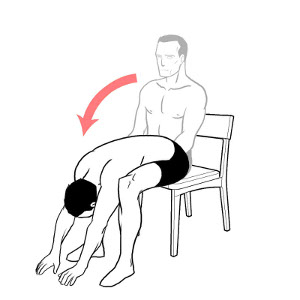
- Starting Position:
- Keep your back straight and your feet flexed, toes pointing toward the ceiling.
2. Lumbar Flexion:
- Inhale deeply, lengthening your spine.
- As you exhale, slowly begin to bend forward at your hips, leading with your chest.
- Keep your back straight as you lower your torso toward your thighs.
- Reach forward with your hands, aiming to touch your toes or grasp your shins, ankles, or feet, depending on your flexibility.
3. Hold the Stretch:
- Once you reach a comfortable stretch point, hold the position for 20-30 seconds.
- Keep your breath steady and relaxed throughout the stretch.
4. Release and Repeat:
- Inhale as you slowly come back up to the starting position, maintaining the straight back.
- Repeat the forward bend for 2-3 more repetitions.
5. Modifications:
- If you find it challenging to reach your feet or experience discomfort in your lower back, you can use a strap or towel around your feet to aid the stretch.
- You can also slightly bend your knees if necessary to reduce strain on the hamstrings.
This seated forward bend helps stretch the entire posterior chain, including the lower back, hamstrings, and calves. Regular practice of this exercise can improve lumbar flexibility and provide relief to tight muscles in the lower back.
Improving lumbar flexion can be beneficial for maintaining flexibility and mobility in the lower back. Here’s a simple exercise that can help enhance lumbar flexion:
Cat-Cow Stretch:
- Starting Position:
- Kneel in a table position.
- Ensure your spine is in a neutral position, neither arched (cow position) nor rounded (cat position).
2. Cat Stretch (Lumbar Flexion):
- Exhale while contracting your abdominal muscles, lifting your back upwards like a stretched cat. Exhale while contracting your abdominal muscles, lifting your back upwards like a stretched cat.
- Drop your head gently, bringing your chin towards your chest.
- Stay in the rounded position for a few seconds and feel the stretch along the entire spine.
- Cow Stretch (Lumbar Extension):
- As you inhale, lift your head and tailbone towards the ceiling, arching your back and opening up your chest.
- Let your belly drop to the floor.
- Hold the arched position for a few seconds, feeling the stretch in your lower back and abdomen.
4. Flow:
- Move smoothly and rhythmically between the cat and cow positions, coordinating your breath with the movements.
- As you exhale, perform the cat stretch (lumbar flexion).
- As you inhale, transition to the cow stretch (lumbar extension).
5. Repetitions:
- Repeat the cat-cow stretch for 8 to 10 repetitions, maintaining a gentle and controlled motion.
Remember to focus on the movement in your lumbar spine during this exercise. Perform it slowly and avoid any abrupt or jerky motions.
Special Test For Lumbar Flexion
Certainly! Here’s a step-by-step guide for a simple and safe test to assess your lumbar flexion:
- Seated Lumbar Flexion Test:
- Sit on a firm surface, such as a chair or a stool, with your feet flat on the floor and your knees bent at a 90-degree angle.
- Place your hands on your thighs with your fingers pointing forward.
- Begin by sitting up tall with a neutral spine (no arch or rounding in the lower back).
- Slowly and gently start bending forward at your waist, sliding your hands down your thighs.
- Continue bending forward until you feel a gentle stretch or slight discomfort in your lower back or hamstrings.
- Hold the position for a moment and then slowly return to the starting upright position.
2. Standing Lumbar Flexion Test:
- Cross your arms in front of your chest or let them hang freely by your sides.
- Begin by standing tall with a neutral spine (maintaining a slight arch in your lower back).
- Slowly and smoothly bend forward at your waist, bringing your chest toward your thighs.
- Keep your knees straight during the movement.
- Continue bending forward until you feel a gentle stretch or slight discomfort in your lower back or hamstrings.
- Hold the position for a moment and then return to the starting upright position.
During both tests, remember to move slowly and avoid jerky or forceful movements. The goal is to assess your comfortable range of motion without causing any pain or strain. If you experience any discomfort or if your lumbar flexion seems limited, it’s best to consult a healthcare professional or a physical therapist for a more comprehensive evaluation and appropriate guidance. They can provide specific exercises or stretches to improve your lumbar flexibility safely.
Lumbar Extension
What is Lumbar Extension?
Lumbar extension refers to the backward bending movement of the lower part of the spine, specifically the lumbar region. It’s a motion that arches the lower back in the direction opposite to the natural curve of the spine. Lumbar extension exercises are often used in physical therapy or fitness routines to strengthen the muscles of the lower back and improve flexibility. However, it’s important to perform these exercises correctly to avoid straining the back muscles or causing injury. Always consult a healthcare professional before starting any new exercise routine, especially if you have existing back issues.
Lumbar extensors Muscles
The lumbar extensor muscles are a group of muscles located in the lower back that are responsible for extending or straightening the spine. These muscles play a crucial role in maintaining proper posture, supporting the spine, and enabling various movements, such as standing up from a seated position or arching the back. The primary lumbar extensor muscles include:
- Erector Spinae: This is a group of muscles that run along both sides of the spine. It consists of three muscle columns: the iliocostalis, longissimus, and spinalis.
- Quadratus Lumborum: This muscle is located on either side of the lumbar spine and helps stabilize the lower back while also assisting in lateral flexion (side bending) and extension of the spine.
- Multifidus: These are small muscles that run along the spine and provide stability and support to each individual vertebral segment. They play a role in maintaining proper spinal alignment and controlling movements of the spine.
- Iliopsoas: While the primary function of the iliopsoas is hip flexion, it also contributes to the lumbar extension when the hip is stabilized.
Strengthening these muscles through targeted exercises can help improve back stability, reduce the risk of injury, and alleviate lower back pain. It’s important to consult a qualified healthcare professional or fitness expert before starting any exercise program, especially if you have existing back issues.
Range of Motion of Lumbar Extension
The range of motion of lumbar extension refers to the amount of backward bending movement that the lower part of the spine, specifically the lumbar region, can achieve. This motion is measured in degrees and describes how much the lumbar spine can arch in the direction opposite to its natural curve.
The range of motion of lumbar extension varies from person to person based on factors such as age, flexibility, spinal health, and any pre-existing conditions. On average, the lumbar spine can typically achieve around 20 to 35 degrees of extension. However, this range can be limited or extended based on individual factors.
It’s important to note that excessive lumbar extension, especially under load or without proper form, can increase the risk of injury to the spinal structures. It’s recommended to perform lumbar extension exercises under the guidance of a qualified healthcare professional or fitness expert to ensure safety and effectiveness.
How to Check Range of Motion For Lumbar Extension
Checking the range of motion of lumbar extension is best done under the guidance of a healthcare professional or a qualified physical therapist. However, here’s a general overview of how it might be assessed:
- Preparation: Wear comfortable clothing that allows for movement. Find a quiet and safe space to perform the assessment.
- Warm-Up: Light cardiovascular activity, dynamic stretches, or mobility exercises can help increase blood flow and loosen up the muscles.
- Assessment Techniques:
- Hands-on Measurement: A healthcare professional might use their hands to guide and measure the range of motion. They would place their hands on specific points of your spine and ask you to perform controlled lumbar extension while they monitor the movement and feel for any restrictions.
- Visual Assessment: You could stand in front of a mirror and perform lumbar extension movements while observing your spine’s curvature and the degree of arching. A healthcare professional might use this method to observe any asymmetry or abnormalities in the movement.
- Goniometer: In some cases, a goniometer, a tool used to measure joint angles, might be used. The healthcare professional would position the goniometer along your spine and measure the degree of extension as you perform the movement.
- Performing Lumbar Extension: To assess your lumbar extension range of motion, you would typically be asked to perform backward bending of the lower back while keeping your upper body upright. This might involve standing or lying on your stomach and arching your lower back as far as comfortably possible.
- Note and Interpretation: The healthcare professional will record the measurement and assess if there are any limitations, pain, or discomfort during the movement. They will compare your range of motion to the expected range for your age and physical condition.
Remember, assessing the lumbar extension range of motion requires expertise to ensure accurate measurement and to prevent any potential injury. It’s always best to consult with a healthcare professional or physical therapist before attempting any range of motion assessments or exercises related to the spine.
Test of Lumbar Extension
One common test to assess lumbar extension is the Modified Schober Test. This test is often used to measure the range of motion in the lumbar spine. Here’s how it’s performed:
- Preparation: Stand upright in a neutral position, with your feet hip-width apart and your hands at your sides.
- Landmarks: Have a healthcare professional mark two points on your lower back. The first point is usually at the level of the dimples of Venus (the bony prominences on either side of the lower back). The second point is marked 10 cm (or about 4 inches) above the first point, along the midline of your spine.
- Measurement: Perform lumbar extension by bending backward from your waist while keeping your knees straight. As you do this, the distance between the two marked points will increase due to the arching of your lower back.
- Measurement Recording: The healthcare professional will measure the new distance between the marked points and record it. This measurement represents the increase in distance during lumbar extension.
- Interpretation: The increase in the distance during lumbar extension is compared to the initial distance. This measurement helps assess the flexibility and range of motion of your lumbar spine. A larger increase in the distance indicates a greater lumbar extension range of motion.
It’s important to note that this test should be performed by a qualified healthcare professional, as they have the expertise to accurately measure and interpret the results. If you suspect any back issues or have concerns about your lumbar spine, consult a healthcare provider before attempting any tests or exercises.
Exercises For Lumbar Extension
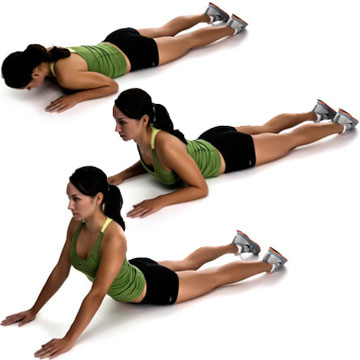
Lumbar extension strengthening exercises can aid your lower back’s flexibility, stability, and general health. A few exercises to think about are listed below:
- Prone Back Extensions
- Lie face down on a mat or other comfortable surface to perform prone back extensions.
- Put your hands at chest height or on the sides of your head.
- Keep your pelvis on the mat and slowly raise your chest off the ground by contracting your lower back muscles.
- Hold the upward position for a short while before lowering yourself back down.
2. Superman Exercise
- Exercise for Superman: Lie face down on a mat with your legs straight and your arms above.
- Lift your arms, chest, and legs off the ground at the same time while keeping your eyes downward to keep your neck aligned.
- Hold the upward position for a short while before lowering yourself back down.3-5 sets of 10-15 repetitions should be done.
3. Bridge Pose:
- Legs bent and flat on the ground, hip-width apart, while you lay on the Patients back.
- Lie down on the plinth with your arms by your sides.
- Create a straight line from your shoulders to your knees by pressing through your heels and lifting the patient’s hips off the Plinth.
- Engage your core while contracting your glutes.
- Hold the bridge posture for a few while before lowering yourself back down.3-5 sets of 10-15 repetitions should be done.
4. Cat-Cow Stretch:
- Begin in a tabletop position with your hands and legs together.
- In the cow pasture, inhale while lifting your tailbone and arching your back.
- In the “cat pose,” you should curve your back, tuck your tailbone, and tuck your chin to your chest.
- As you transition between these two positions, follow your breath.
- Do 10 to 15 repetitions.
5. Child’s Pose Extension:
- Begin by kneeling with your big toes touching and your knees spread wide.
- Place your arms out in front of you while you lean back on your heels.
- Maintaining your hips on your heels, gently drop your chest towards the ground.
- Hold the stretch for a few long, deep breaths as you feel it in your lower back.
- Always exercise these muscles with correct technique and restraint.
- Before beginning a new workout regimen, it is advised to speak with a healthcare provider or physical therapist if you have any current back problems or health concerns. Depending on your requirements and constraints, they can offer tailored advice.
Special Test For Lumbar Extension
There are specific clinical tests that healthcare professionals use to assess lumbar extension and related conditions. One such test is the “Lumbar Extension Test,” also known as the “Prone Instability Test” or “Painful Arc Test.” Here’s how it’s performed:
Lumbar Extension Test:
- Preparation: The patient lies face down on an examination table or mat.
- Procedure:
- The examiner stands at the patient’s feet and instructs the patient to keep their hips and legs relaxed while their upper body is supported on their forearms.
- The examiner then gently lifts the patient’s upper body into lumbar extension, using their hands to apply a controlled amount of pressure on the patient’s pelvis or lower ribcage.
- The patient is asked if they feel any pain, discomfort, or instability during this movement.
- Interpretation:
- If pain is reproduced or worsened during lumbar extension, it could indicate underlying conditions such as facet joint dysfunction, muscle strain, or instability.
- The test is also used to assess for the presence of “painful arcs” within the lumbar spine’s range of motion.
It’s important to note that clinical tests should be performed by trained healthcare professionals, such as physical therapists or doctors, who can accurately interpret the results and determine the appropriate course of action based on the findings. If you are experiencing back pain or discomfort, it’s advisable to seek medical evaluation before attempting any tests or exercises.
Summary
Lumbar flexion refers to the forward bending movement of the lower spine, specifically the lumbar region. The main lumbar flexor muscles include the Psoas major, Iliacus, Rectus abdominis, Tensor fasciae latae, and External obliques. On average, the normal range of lumbar flexion is approximately 40 to 60 degrees. Knee-to-Chest Stretch, Seated Forward Bend, and Cat-Cow Stretch are exercises for Lumbar Flexion. Seated Lumbar Flexion Test and Standing Lumbar Flexion Test are special tests for Lumbar Flexion.
Lumbar extension refers to the backward bending movement of the lower part of the spine, specifically the lumbar region. The primary lumbar extensor muscles include Erector Spinae, Quadratus Lumborum, Multifidus, and Iliopsoas. On average, the lumbar spine can typically achieve around 20 to 35 degrees of extension. Prone Back Extensions, Superman Exercises, Bridge Pose, Cat-Cow Stretch, And Child’s Pose Extensions are exercises for lumbar extension. The special test for Lumbar extension is Lumbar Extension Test.
FAQs
Curvature (73-40 degrees) decreases with age. Lateral flexion (28-14 degrees, LandR) decreased with increasing age. Dilatation (29-6 degrees) decreased the most, 79% with increasing age.
The lumbar extensors consist mainly of the erector spine and multifidus muscle groups and work together with the gluteal and hamstring muscles to extend the trunk. This combined movement is called lumbopelvic rhythm.
A flexion biased simply means that your back pain is relieved when you bend forward or turn your back. A strain, on the other hand, means you get pain by bending back or increasing the arch of your back.
Lumbar flexion – The movements of the lumbar spine can begin to bend and encourage more forward bending, while the hips and chest start later and contribute less. Excessive or hypermobile flexion of the lumbar region may be observed at the limit of forward flexion.
Flexion is when the muscle contracts and the joints bend at the elbow, lifting the weight. The extension would be straightening the arm back to the starting position, which increases the length and angle of the joint.

